Periprosthetic fracture is a term used to describe any fracture that occurs around an implanted orthopedic prosthesis, most commonly knee or hip arthroplasties.
On this page:
Epidemiology
Periprosthetic fractures complicate, ~1% of total hip arthroplasties and ~1.5% of total knee arthroplasties 1,2 although other evidence suggests incidence can range with primary total hip arthroplasty (THA) ranging from 0.1 to 18%, total knee arthroplasty around 0.3 to 5.5%, and total shoulder arthroplasty around 0.5 to 3% 3.
Periprosthetic fractures can also be intra-operative with an incidence of around 1.7% for primary THA versus 3.5% at 2- years 3.
Radiographic features
They can be difficult to diagnose, with metalware potentially obscuring the fracture on an x-ray or creating extensive artifact on CT/MRI.
In the case of hip and knee arthroplasty, it is important to evaluate implant fixation for loosening or subsidence as well as to assess bone stock. The position of the fracture and stability of the implant should be assessed.


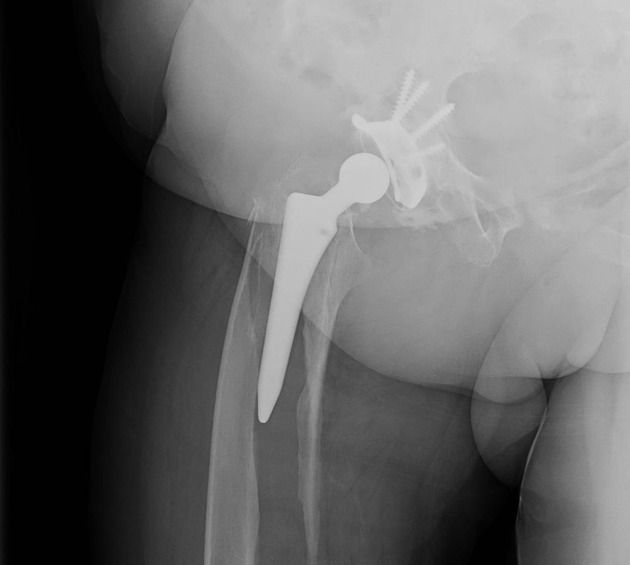
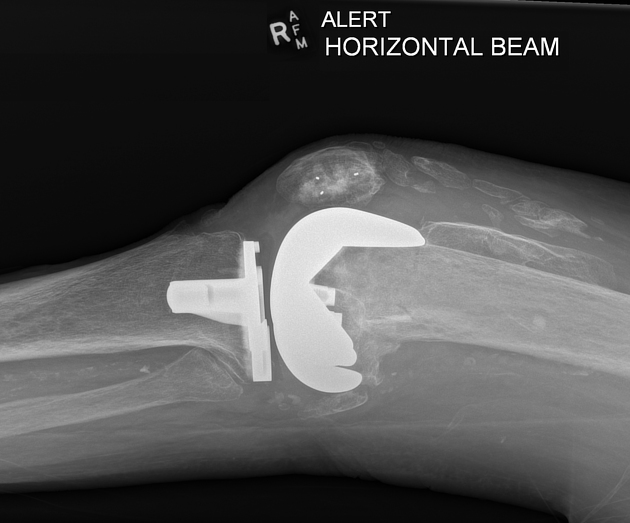
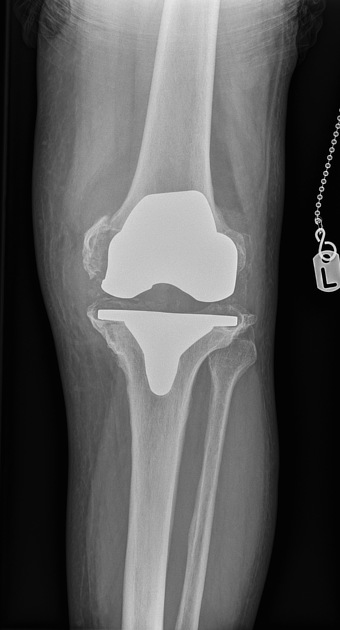
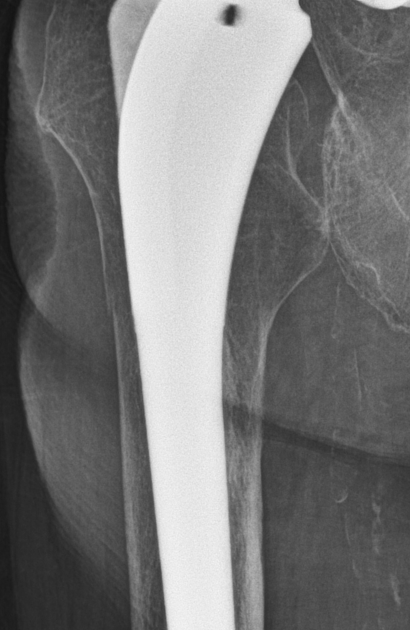
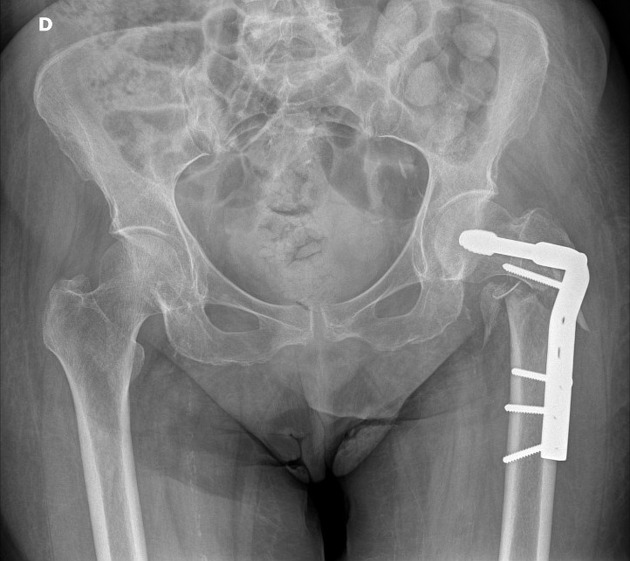

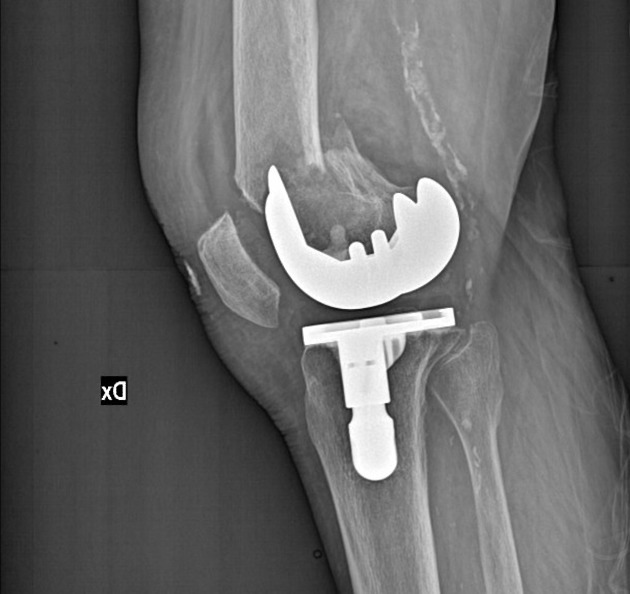
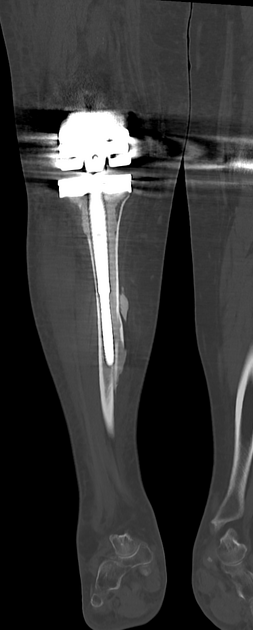
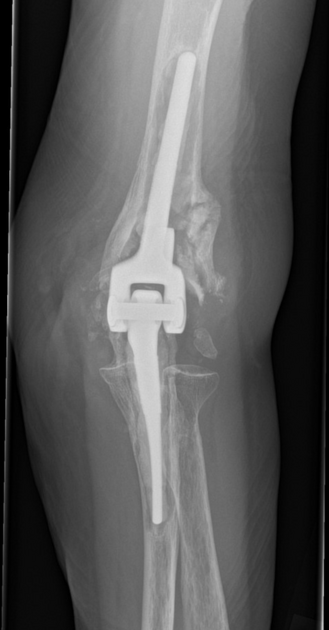


 Unable to process the form. Check for errors and try again.
Unable to process the form. Check for errors and try again.